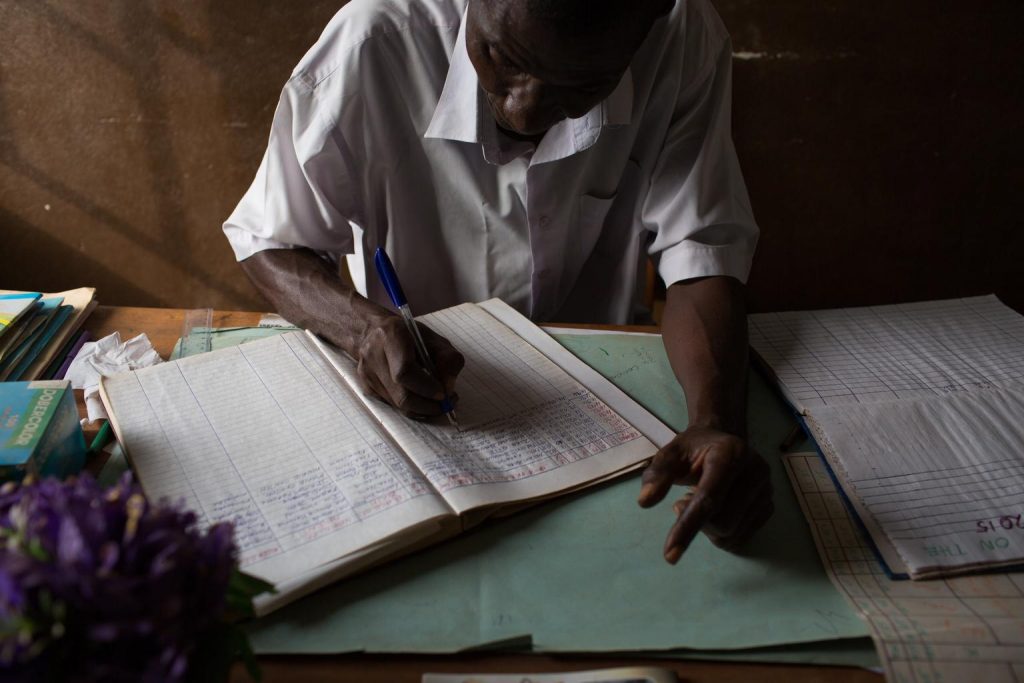From the foreword by Co-Chairs H.E. Dr Gro Harlem Brundtland and Mr Elhadj As Sy: “For its first report, the Global Preparedness Monitoring Board reviewed recommendations from previous high-level panels and commissions following the 2009 H1N1 influenza pandemic and the 2014-2016 Ebola outbreak, along with its own commissioned reports and other data. The result is a snapshot of where the world stands in its ability to prevent and contain a global health threat. Many of the recommendations reviewed were poorly implemented, or not implemented at all, and serious gaps persist. For too long, we have allowed a cycle of panic and neglect when it comes to pandemics: we ramp up efforts when there is a serious threat, then quickly forget about them when the threat subsides. It is well past time to act.”
Background report
A World at Risk: Annual Report on Global Preparedness for Health Emergencies
Topics
Health
On 14 April, the principal of St. James School registers students on their first day back to class, in Grafton, a suburb of Freetown, the capital.
In April 2015 in Sierra Leone, around 1.8 million children prepared to return to school after an eight-month break due to the outbreak of Ebola virus disease (EVD). The Government of Sierra Leone, UNICEF and partners worked to ensure that children were safe, including by implementing temperature checks and handwashing protocols. To support the return to school, UNICEF facilitated the training of 9,000 teachers in EVD prevention, safety guidelines and psychosocial support. UNICEF is also supplying 24,300 handwashing stations, enough for three in every school, as well as cleaning equipment to prepare school buildings. Cases of EVD continue to be reported in Sierra Leone, but are well down from levels seen at the end of 2014.
Related content
Factsheet
Remote response to Ebola outbreak in DRC
The Social Science in Humanitarian Action Platform is supporting UNICEF, WHO, IFRC and other partners in the Democratic Republic of Congo to respond to the Ebola outbreak in Equateur Province. The Platform has four key streams of action: 1) Rapid…
Central and East Africa Hub
SSHAP
2018
Briefing
Cross-border dynamics between Burundi and Tanzania in the context of viral haemorrhagic fever outbreaks, 2025
This brief summarises key considerations regarding cross-border dynamics between Burundi and Tanzania in the context of viral haemorrhagic fever (VHF) outbreaks in Tanzania and Uganda.
Central and East Africa Hub
SSHAP
2025
Briefing
Using social and behavioural science to inform the use of vaccines during health emergencies
This brief synthesises social and behavioural science research on the use of vaccines during health emergencies in sub-Saharan Africa, including experimental vaccines undergoing clinical trials.
SSHAP
2025
Article
Hiding in plain sight: IDP’s protection strategies after closing Juba’s protection of civilian sites
This article examines how former Protection of Civilian site (PoCs) residents are staying safe and protecting themselves after the United Nations Mission in South Sudan's (UNMISS) handing over of the PoCs to the Revitalised-Transitional Government of National Unity (R-TGoNU).
Central and East Africa Hub
Global Policy
2023


